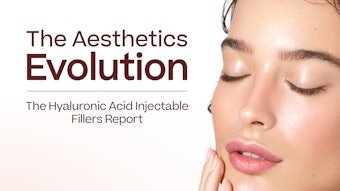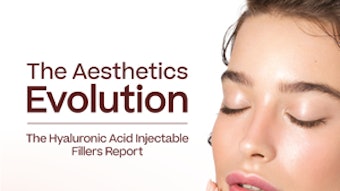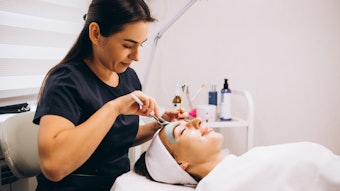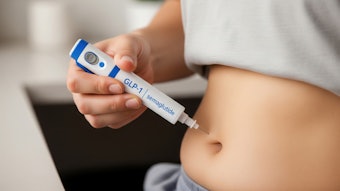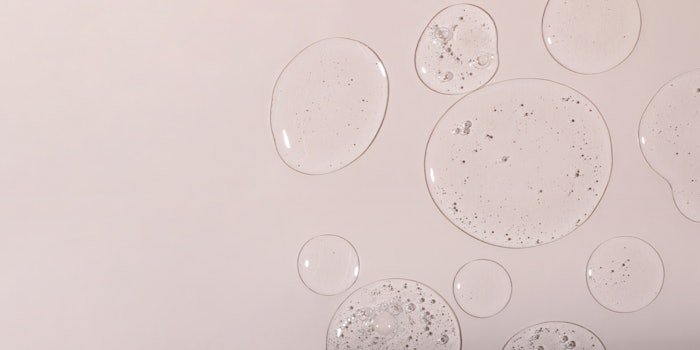
In a recent interview with Royale, Kristi Branim Fox revealed that her sister, actress Megan Fox, hasn't undergone face treatments as many fans of hers speculate. Fox says her sister instead uses a serum called Biotulin Supreme Skin Gel. Described as an organic alternative to Botox created in Germany, it’s needle-free, and its plant-based ingredients gently relax facial muscles and smooth out fine lines with the naturally occurring numbing effect of spilanthol.
While the actress has been open about procedures she’s undergone in the past, like breast augmentation, she has stood firmly on the fact that she hasn't used Botox injections, even notoriously posting photos on Facebook in 2011 titled "Things You Can't Do With Your Face When You Have Botox" to shut down the rumors. The ingredient in this serum, spilanthol, is able to accomplish the look of tightened, rejuvenated skin for a shorter period of time than Botox injections by modulating sensory nerve activity.
Fast-Acting but Short-Lived: Spilanthol as a Non-Invasive Alternative to Botox
Anil Shah, MD, who administers injectables like Botox, says spilanthol is an alkylamide compound, a class of fatty acid amides derived from acmella oleracea–well-known for its anti-wrinkle activity [1]. The compound has a pungent taste accompanied by tingling and numbness to tongue and lips [2], and is known medicinally for its anti-bacterial properties for the skin and body. This reaction, Shah says, reduces nerve excitability, distinct from botulinum toxin, or Botox.
“[Botulinum toxin] acts at the neuromuscular junction by preventing the release of acetylcholine,” he says. “Spilanthol’s mechanism is more superficial and limited to dermal nerve endings and perhaps very superficial muscle tone, mediated in part through TRPV1 receptors involved in nociception and local muscular tension.”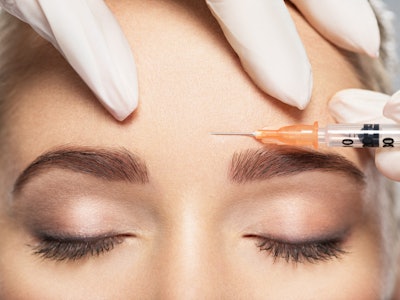 Spilanthol shows promise for being used between Botox treatments, keeping the treatment intact until patients can schedule another appointment, and it can also work in the areas where Botox is less effective or carries a higher risk.Courtesy of Valua Vitaly at Adobe Stock
Spilanthol shows promise for being used between Botox treatments, keeping the treatment intact until patients can schedule another appointment, and it can also work in the areas where Botox is less effective or carries a higher risk.Courtesy of Valua Vitaly at Adobe Stock
Acting as a topical, spilanthol stimulates the nerves to create a numbing, anesthetic sensation within minutes, whereas Botox requires injection and takes about three to seven days to take full effect. Spilanthol’s effects typically wear off within one to two hours, while Botox can last three to four months, and that is the main difference, Shah says.
Given that spilanthol and Botox vary in depth of action and duration of benefits, though presenting similar results, preference of invasiveness and effort of maintenance, depending on the severity of wrinkles, will range by patient.
“The efficacy is vastly different, depending how severe wrinkles are and how long a patient desires the tightness to last,” he says. “It really depends on patient expectations."
Between Botox Appointments or Instead of Them: The Emerging Role of Spilanthol in Preventive Aesthetics
For someone wanting a smoother forehead or meaningful reduction in facial lines, Botox remains the gold standard, Shah says, but the two could work powerfully in conjunction, he adds.
Spilanthol, as Fox’s face displays, does achieve the soft look younger people, who are interested in preventive treatments, desire, especially given the fact that Fox has taken the precautionary steps through nutrition and skin care to alleviate the potential of unwanted wrinkles, and is only 39 years old. Spilanthol can reduce wrinkles by around 15-20%, while Botox routinely produces 70-90% wrinkle reduction depending on the injection site and dose, Shah explains.
Spilanthol shows promise for being used between Botox treatments, keeping the treatment intact until patients can schedule another appointment, and it can also work in the areas where Botox is less effective or carries a higher risk, such as the midface or around the mouth.
There are many patients as well who do not desire a ‘overfiller look’ and simply decide to put plant-derived, holistic medicine on their face for a natural softening, avoiding the cost and maintenance of Botox. Spilanthol presents an impressive safety profile over Botox: There is no evidence of systemic absorption or long-term adverse effects. Unlike botulinum toxin, which can lead to the development of neutralizing antibodies in rare cases, spilanthol has shown no evidence of resistance or tachyphylaxis.
“Its safety profile is excellent, especially for short-term or occasional use,” Shah says. “It does not deliver the same level of muscular relaxation or wrinkle reduction as Botox, but it may offer a bridge for patients who are hesitant about injectables.”
The topical solution works particularly for younger patients. For mature patients with well-established lines, the results are likely to be minimal, Shah says. Topically applied spilanthol typically produces effects that last from 30 minutes up to two hours, depending on skin absorption and individual physiology.
Not a Neurotoxin: Why Calling Spilanthol 'Natural Botox' Can Be Misleading
Coining this ingredient as “natural or vegan Botox” can be misleading, however, Shah argues. The phrase is catchy, but it can be deceptive if interpreted too literally. It’s important to clarify that the effects of spilanthol are milder and much shorter-lived, derived from a natural plant, but it is neither a neurotoxin nor structurally related to botulinum toxin, he explains.
“If this approach allows patients to reduce their injection frequency from four times a year to two, the value is significant in terms of cost, convenience and patient satisfaction,” Shah says.
References:
1- https://pmc.ncbi.nlm.nih.gov/articles/PMC9608073/
2- https://www.sciencedirect.com/science/article/abs/pii/S0731708522004125
